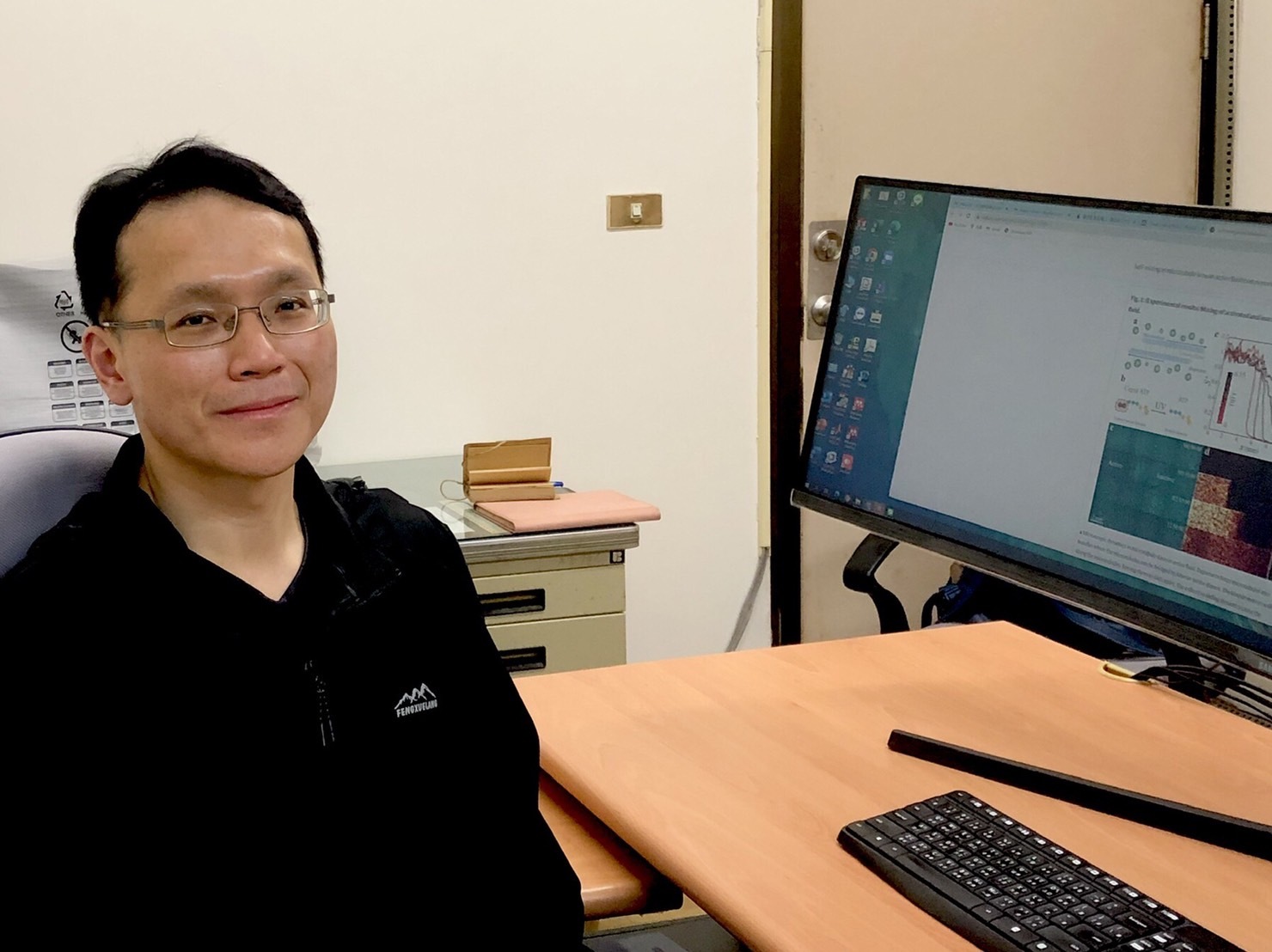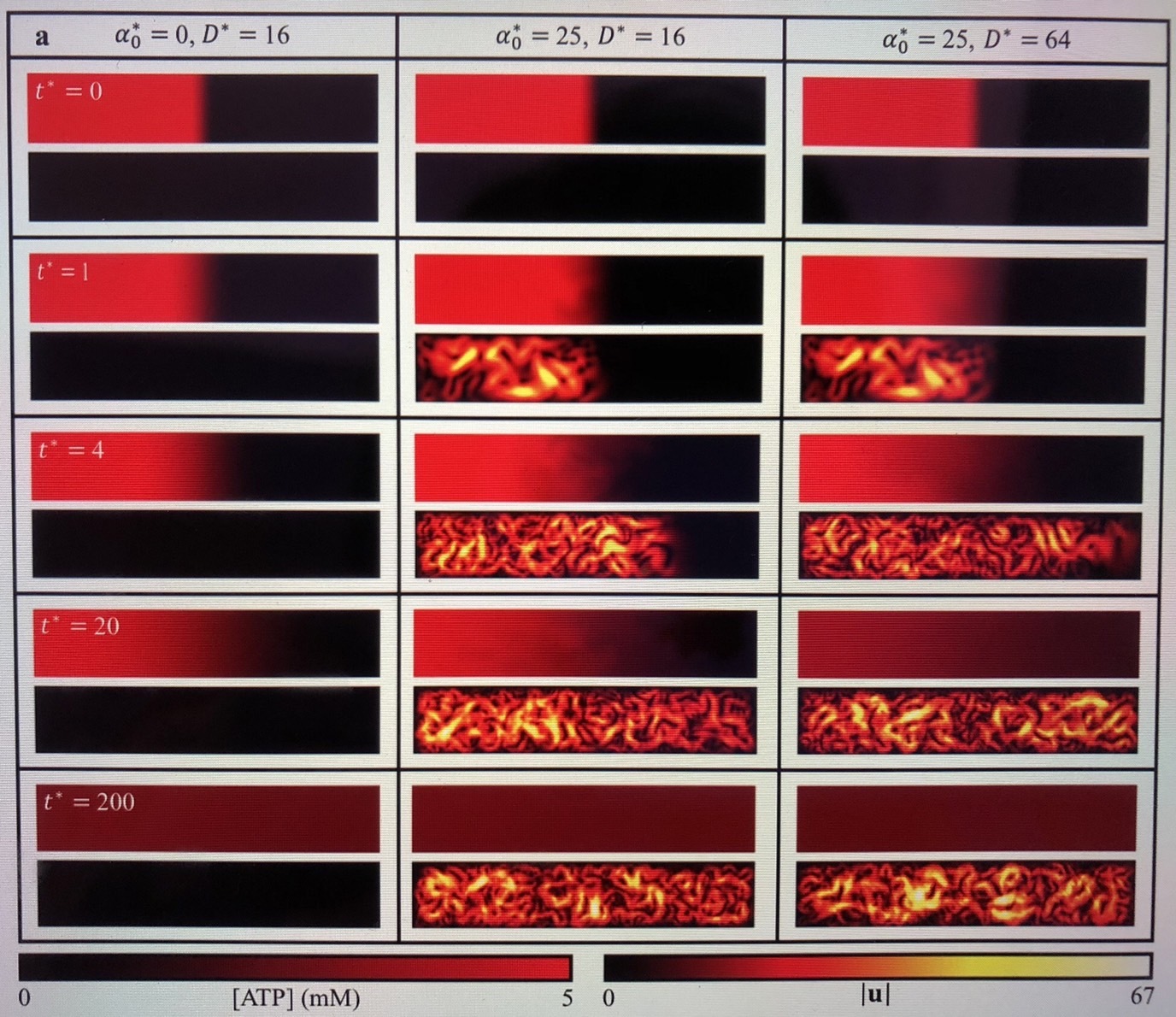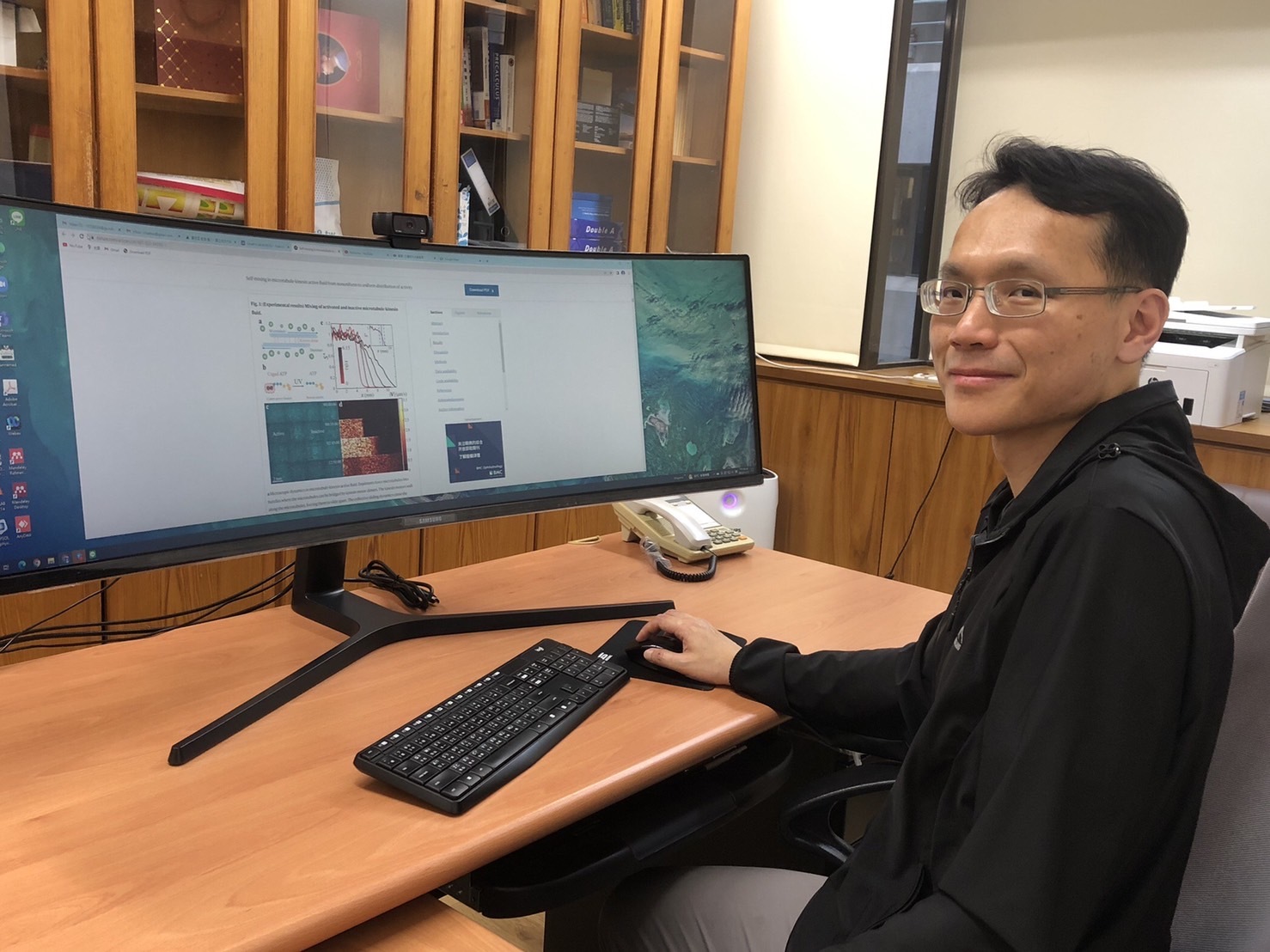NCKU Researcher's Participation in International Project Published in Nature Communications
Written by Amber Tyan. Image credit to News Center.
Assistant Professor Chih-Che Chueh of the Department of Aeronautics and Astronautics in NCKU has participated in the research project on active fluids led by Assistant Professor Kun-Ta Wu of the Worcester Polytechnic Institute, USA. The research has been published in the internationally renowned journal Natural Communications.

Assistant Professor Chih-Che Chueh from the Department of Aeronautics and Astronautics, NCKU, participated in a transnational research project on active fluids
Chueh pointed out that micromixing of active fluids has already been applied in many industries, such as drug development in pharmaceutical engineering. However, there is still little academic research on the characteristics of active fluids and the mixing kinematics of activities that vary in time and space (flow domains and quantification). With support from the National Science Foundation, the laboratory led by Assistant Professor Kun-Ta Wu of the Worcester Polytechnic Institute has specifically explored these topics. Chueh, who experts in computational fluid dynamics, has guided the research team in establishing a theory in active fluid, building a numerical simulation, and analyzing the estimation of the diffusion mixing time. Ultimately, they compared results with the entire team's experiments, successfully completing the research.

Table of ATP concentration (top panels) and active fluid flow speed (bottom panels) maps for various dimensionless activity levels and molecular diffusion coefficients. When the fluid has no activity (α∗0=0; left column), ATP disperses to the right side of the system only by molecular diffusion; the dispersion is enhanced when the active fluid starts to flow and actively transport ATP (α∗0=25; middle column). The dispersion is further enhanced when ATP diffuses significantly faster (D∗= 64; right column)
To investigate, UV-activated caged ATP is used to activate controlled regions of microtubule-kinesin active fluid and the mixing process is observed with fluorescent tracers and molecular dyes. At low Péclet numbers (diffusive transport), the active-inactive interface progresses toward the inactive area in a diffusion-like. At high Péclet numbers (convective transport), the active-inactive interface progresses in a superdiffusion-like manner. Results show that active fluid mixing involves complex coupling between distribution of active stress and active transport of ATP and reduces mixing time for suspended components with decreased impact of initial component distribution. This project will inform application of active fluids to promote micromixing in microfluidic devices, aiding industries such as medical and biomedical engineering in improving manufacturing efficiency.

Assistant Professor Chih-Che Chueh is the only non-American member of the research team
Assistant Professor Chih-Che Chueh is the only non-American member of the research team. He stated that the challenges of transnational research collaboration are mainly team communication and understanding. Chueh believes that communication includes not only the ability to express oneself in a foreign language, but also the understanding of habitual expressions in different learning environments, both of which can be refined through time and practice. As for understanding, it means valuing the opinion of each member of the team, as each member provides a different viewpoint and way of thinking.
Diversity will construct and aid the team towards a more comprehensive and thorough understanding. Therefore, Chueh especially encourages students to strive for the opportunity to participate in transnational research collaborations,accumulating more diverse thinking and communication skills.
Provider:
News Center
Date:
2022-12-19



